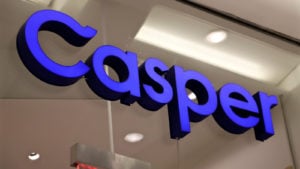Read The Full Article On: Investorplace
Most recent IPOs have been winners — but the future looks cloudy for these seven stocks
Over the last few weeks, several initial public offerings have helped prove that the equity markets are back on track. Recent IPOs like Snowflake (NYSE:SNOW) and JFrog(NASDAQ:FROG) have seen enormous first-day pops from their opening price.
Investors are looking for growth, and most recent IPOs have been younger, early stage companies. It is not just the IPO market, either. So-called special purpose acquisition companies (SPACs) have brought dozens of companies public, many in growth industries like electric vehicles and online gambling.
But the big gains for newly public companies, whether IPOs or SPACs, raise the same questions. At what point does valuation trump even impressive growth? And can a single industry really birth so many expected winners?
For these seven recent IPOs, those questions seem paramount. Most have seen solid gains since going public. But all have significant concerns that suggest significant risk going forward.
The IPO market doesn’t necessarily need to cool down for these stocks to do the same:
- American Well (NYSE:AMWL)
- Shift4 Payments (NYSE:FOUR)
- Laird Superfood (NYSEMKT:LSF)
- Social Capital Hedosophia Holdings II (NYSE:IPOB)
- Casper Sleep (NYSE:CSPR)
- Vroom (NASDAQ:VRM)
- Xpeng (NYSE:XPEV)
Recent IPOs: American Well (AMWL)

Source: Stephanie L Sanchez / Shutterstock.com
The story behind American Well admittedly sounds attractive. The company is one of several telehealth plays garnering investor attention at the moment. The sector should see accelerated growth as the novel coronavirus pandemic draws interest from patients, doctors and insurance providers.
But a closer look raises some concerns. Telehealth is going to be a growing industry, but American Well hardly has that industry to itself. In fact, its odds of garnering top market share seem relatively slim. The merger of Teladoc Health (NYSE:TDOC) and Livongo Health (NASDAQ:LVGO) is likely to create the telehealth leader in the United States, and potentially internationally.
Meanwhile, investors are paying up big for AMWL stock, even after a recent pullback. Shares have rallied over 80% from their IPO price of $18. AMWL trades at over 40x trailing 12-month revenue. The company is not profitable, and likely won’t be until 2023.
Admittedly, that type of valuation isn’t out of line for this market. But those kind of multiples usually are applied to companies that not only are in fast-growing markets, but have a real chance to lead those markets. With the Teladoc tie-up, American Well is playing for second. AMWL stock isn’t priced as such.
Shift4 Payments (FOUR)

Source: Shutterstock
The payments space has seen no shortage of winners, and out of the gate Shift4 stock has been one of them. FOUR has rallied nearly 150% from its IPO price of $23.
But there are reasons to believe that, at the least, FOUR stock is headed for some short-term pressure. Here, too, competition will be intense, as Shift4 goes up against giants like Square(NYSE:SQ), Stripe and PayPal (NASDAQ:PYPL). Shift4 aims to mitigate that pressure by focusing on key verticals — but those verticals include restaurants, hotels and retail, all of which are facing significant pressure from the pandemic.
Valuation, meanwhile, looks stretched. FOUR trades at 100x next year’s earnings estimate. Price-revenue multiples appear less aggressive, but are explained by lower gross margins. And Shift4 reportedly was up for sale last year before pivoting to an IPO, which raises the question of why private shareholders were looking to cash out.
Shift4 does have time to grow into its valuation, and a market capitalization under $5 billion doesn’t require the company to quickly become another giant in the space. But with the stock taking another leg up in recent weeks, it does seem like there’s a good chance the post-IPO rally is at or near an end.
Recent IPOs: Laird Superfood (LSF)

Source: David Tonelson / Shutterstock.com
Laird Superfood gets its name from founder and well-known competitive surfer Laird Hamilton. The company develops plant-based foods, initially focusing on beverages, such as coffee creamer and coconut water. Last week, the company launched its first snack with flavored Pili nuts.
With Beyond Meat (NASDAQ:BYND) opening eyes to the promise of plant-based foods, it is not a surprise that LSF stock has seen heavy buying after its IPO last month. Still, as with FOUR, there is a real question as to whether category strength alone can drive the stock higher.
After all, LSF has more than doubled from its IPO price — in a little over three weeks. Its market capitalization now clears $400 million. Revenue over the past four quarters is less than $20 million.
For now, this is a niche business in what remains, despite Beyond Meat’s growth, a niche category. Given that, a 20x-plus multiple sales looks full — if not outright stretched.
Social Capital Hedosophia Holdings II (IPOB)

Source: Shutterstock
Social Capital Hedosophia II is one of the SPACs that have provided an alternative route to market. And it has made one of the biggest deals of the year, merging with digital real estate platform Opendoor. IPOB CEO Chamath Palihapitiya has called the company his “next 10x idea.”
Many investors seem to agree. IPOB stock has soared since the deal was announced. It trades above $24 at the moment, up more than 100% since the merger was announced just last month.
But there are reasons for skepticism as well. Opendoor itself sees a path to $50 billion in revenue, along with EBITDA margins of 4%-6%. At the midpoint, that assumes the platform would generate about $2.5 billion in EBITDA once the revenue target is reached.
But Opendoor, based on the current IPOB stock price, already is valued shy of $17 billion — nearly 7x that figure. Assuming it takes a decade to hit that $50 billion mark (which is 10x 2019 revenue), using margin guidance investors could be looking at low double-digit annualized returns — if Opendoor delivers.
Certainly, that is an outstanding investment in the best-case scenario, but there are risks as well. Zillow (NASDAQ:Z, NASDAQ:ZG) is moving aggressively into the same market. So are a significant number of startups. Those competitors will not only fight for revenue, but could squeeze margins as well. Realtors will fight to protect their turf too — perhaps by lowering commissions.
More broadly, there is the real risk that the Opendoor model just doesn’t work. Arguing that U.S. home sales are “ripe for disruption” sounds innovative. But the vagaries of local markets, let alone individual properties, simply may not be captured by even the most powerful algorithm.
At this point, at least some of the potential “10x” upside seems priced in. The risks, however, are not.
Recent IPOs: Casper Sleep (CSPR)

Source: Chie Inoue/Shutterstock.com
The story for Casper Sleep is not over. But it is certainly not off to a good start.
CSPR is one of the few recent IPOs to trade down. The stock is off about one-third from its initial price of $12 — which itself was cut sharplyfrom an initial range of $17-$19.
The core problem for Casper is simple: It is not growing fast enough. The novel coronavirus pandemic has benefited e-commerce players of all kinds. But the company delivered just 5% direct-to-consumer growth in its second quarter. Rival Purple Innovation (NASDAQ:PRPL) grew DTC revenue by 128% in the same quarter.
Simply put, Casper is falling behind. And so it is little surprise that its stock has done the same. While CSPR has faded, PRPL stock has more than doubled since Casper’s IPO, gaining 244% so far this year.
That needs to change. But catching up will take some time. In the meantime, there is an obvious question for Casper: If it can’t grow now, when exactly will it grow?
Vroom (VRM)

Source: Lori Butcher / Shutterstock.com
E-commerce has been one of 2020’s hottest sectors, and the optimism has extended to the automotive industry. Carvana (NYSE:CVNA) has more than doubled this year, and gained a whopping 860% from March lows. Shift(NASDAQ:SFT) just went public via a SPAC merger that closed this week. And VRM, even with a pullback, has rallied 123% from its IPO price of $22.
The obvious question is whether all of these companies can be winners, even if the pandemic drives increased online penetration of an industry that long has run on face-to-face dealings. The likes of CarMax (NYSE:KMX) and AutoNation (NYSE:AN) will roll out their own online options. The market is huge in terms of sales, but there simply may not be that much profit to go around.
Again, VRM has pulled back, which does make valuation more constructive. But even at a lower price, the market still is pricing in a significant amount of success in terms of both market growth and Vroom’s market share. There doesn’t seem to be much room for error, and the pullback in VRM (and sideways trading in CVNA) may be a reflection that the market is recognizing that fact.
Recent IPOs: Xpeng (XPEV)

Source: Johnnie Rik / Shutterstock.com
Perhaps no sector has been hotter in 2020 than electric vehicles. And so investors are looking for the next big EV winner — and some believe it is Xpeng.
Perhaps. Xpeng does have a big opportunity in China, which should be one of the faster-growing EV markets in the world. But the company for now focuses only on high-end SUVs, putting it in direct competition with Nio (NYSE:NIO) and other domestic manufacturers. Tesla(NASDAQ:TSLA), of course, is ramping up its own operations in the country.
Xpeng is growing nicely — but so are the dozens of EV manufacturers in the country. Remember, China offers generous subsidies, and its pandemic recovery is boosting manufacturers. It is hard to see even that growth supporting what is a $17 billion market capitalization on the back of just $300 million in revenue. And if the sector as a whole pulls back at all, XPEV could have a long way to drop.

